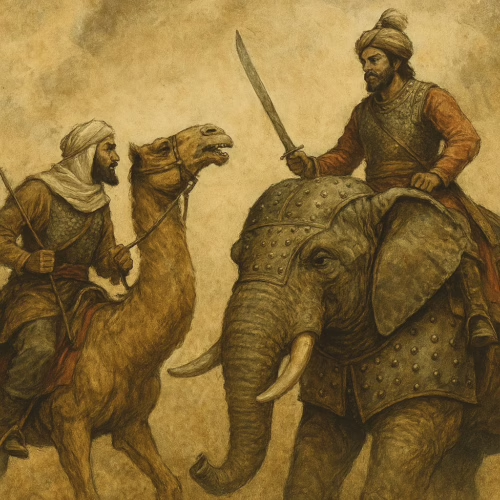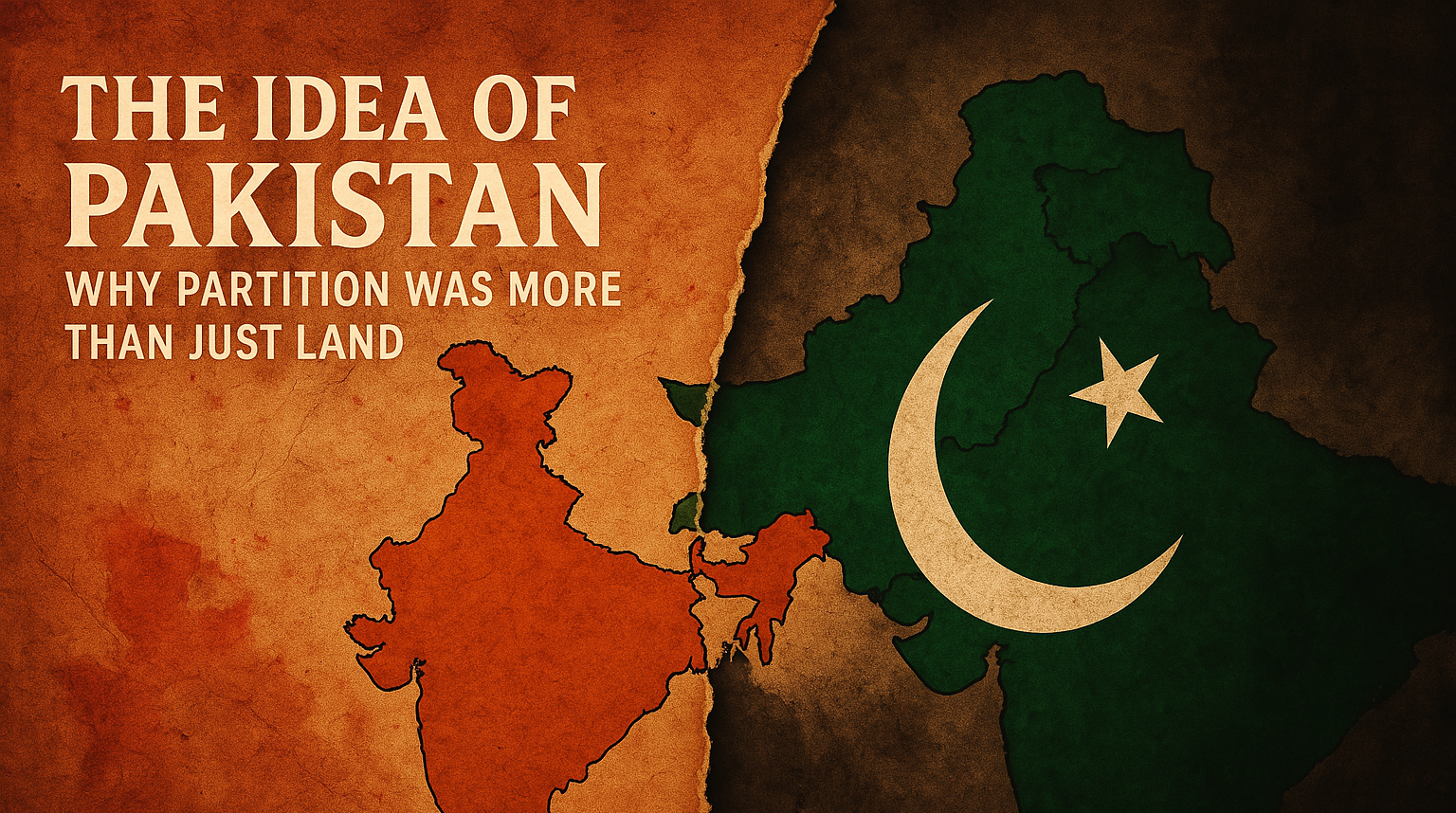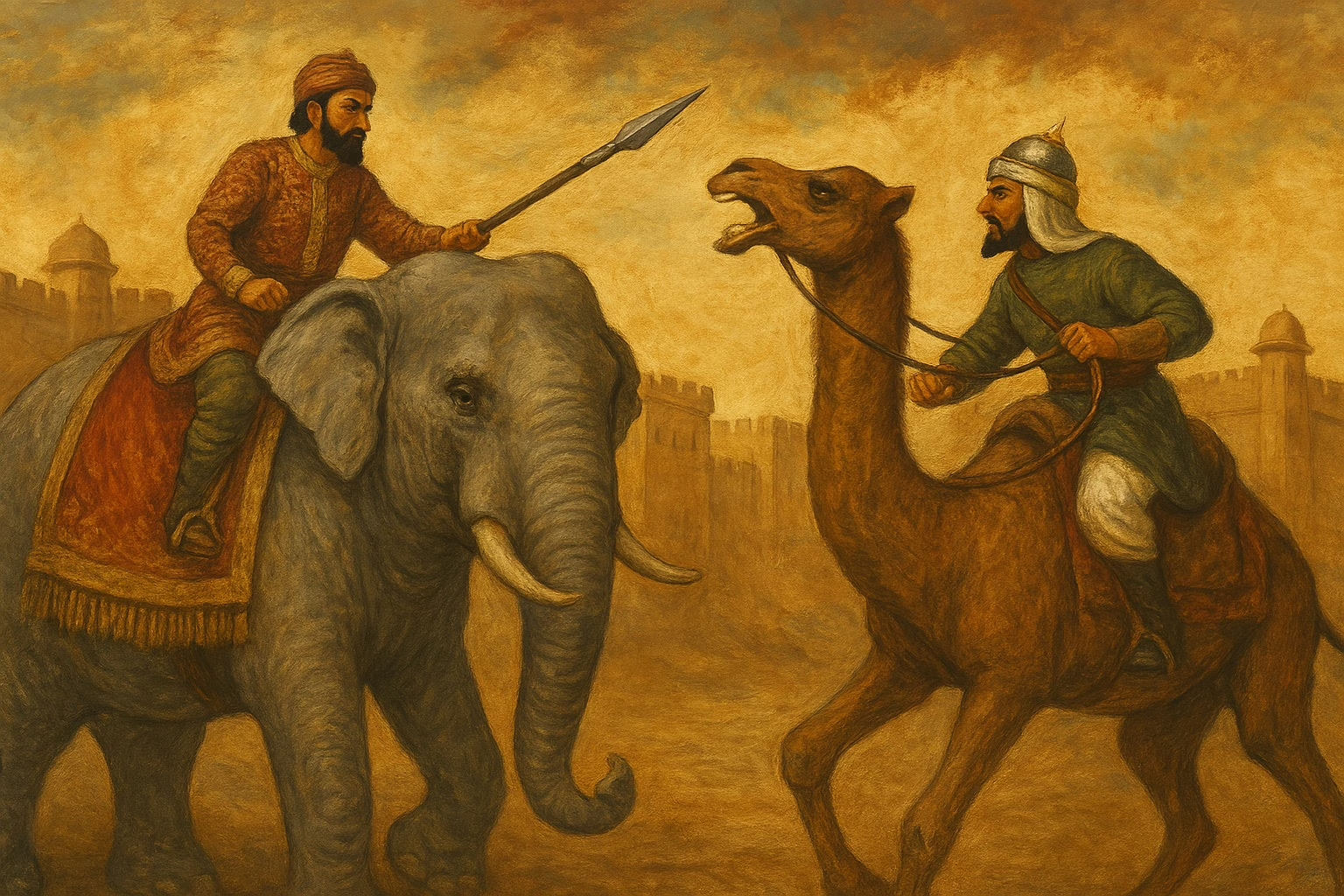Forget textbooks. This isn’t your grandpa’s version of history, and definitely not what they spoon-fed you in school. The First Muslim Invasion of India wasn’t just a minor border scuffle; it was a full-blown culture crash involving faith, fire, and a fair bit of foolishness.
Imagine a 17-year-old Arab general—Muhammad bin Qasim—riding into Sindh on camelback, with Quranic zeal, a playbook of war, and enough political backing to make him look like a desert Napoleon. On the other side? Raja Dahir, ruler of Sindh, noble, aging, honorable—and tragically unprepared.
This wasn’t just when camel met elephant. This was when thunder met inertia.
Setting the Scene: Sindh Before the First Muslim Invasion of India
Let’s rewind.
Sindh in 712 CE was like that quirky relative who means well but keeps getting scammed. Raja Dahir, of the Brahmin dynasty, ruled over a patchwork kingdom full of traders, temples, monks, and more ego than unity.
While India was philosophizing on karma, Arabs were mobilizing with purpose. Back in Damascus, the Umayyad Caliphate had one eye on expansion and the other on vengeance. Pirates in Sindh had allegedly attacked Arab ships—possibly carrying royal brides. Cue holy rage.
But let’s be honest: this wasn’t just about pirates. It was about power, and Sindh had two things the Caliphate loved—a disunited polity and loot-rich temples.
🐫Muhammad bin Qasim: Teenage Dream or Nightmare?
And then came Muhammad bin Qasim—a 17-year-old with a killer résumé.
No, seriously. At an age when most of us were worrying about acne, Qasim was crossing deserts, laying siege to cities, and issuing fatwas. He had an army full of Syrian archers, Persian engineers, and enthusiastic young men promised paradise for their participation.
His strategy? Brutal brilliance. When cities surrendered, he taxed them. When they resisted, he burned them to the ground. One temple at Debal reportedly housed a golden idol with ruby eyes. Qasim made sure the eyes saw no more.
What made his conquest almost too easy? A few things:
- Local betrayals—greedy chieftains, jealous feudatories, and rival monks
- Religious opportunism—some Buddhists welcomed him to dethrone Brahmin supremacy
- Raja Dahir’s hesitation—he acted too late, too gently
Thus began the First Muslim Invasion of India, lubricated not just by blood, but by betrayal.
🐘 Raja Dahir: The Last Elephant with Honor
If history were a tragedy, Raja Dahir would be its noble protagonist—the man who saw the future, but too late.
Unlike Qasim, Dahir was no zealot. He was tolerant, generous, and in some cases, too principled for his own good. But idealism doesn’t stop arrows. And elephants, while majestic, don’t exactly outmaneuver camels in desert warfare.
When Qasim attacked, Dahir met him head-on. Literally. On an elephant. Cloaked in dignity, armed with a sword, and fueled by dharma.
But valor doesn’t always win.
Dahir was killed in battle. His daughters were captured. And his capital—Brahmanabad—fell. His beheading was the symbol Qasim needed. The elephant was slain. The camel had arrived.

⚔️ The Real Reasons Behind the First Muslim Invasion of India’s Success
Let’s not pretend the Arabs were unbeatable. They weren’t gods. They were just more organized, more motivated, and less distracted.
Here’s what really went wrong for India:
- Disunity: While Arabs had a single Caliph, India had twenty kings playing Game of Thrones.
- Caste Politics: Shudras and Buddhists didn’t weep when Brahmin temples were looted.
- Strategic Stupidity: Dahir delayed pre-emptive action, hoping the threat would pass. It didn’t.
- Infiltration: Local support for Qasim gave him supply lines, intel, and warm welcomes.
In short, India collapsed from within before it was conquered from without.
💣 What Did the First Muslim Invasion of India Actually Do?
You might think: “Okay, so Qasim came, conquered, and left. So what?”
Oh, it mattered. Hugely.
- It changed the Indo-Islamic equation forever. Sindh became the lab for testing Indo-Islamic synthesis—and cultural schizophrenia.
- It cracked open India’s psychological armor. The myth of invincibility was shattered.
- It introduced a new political template—jizya tax, religious apartheid, Arabic administration.
- It paved the way for 500 years of invasions—Ghazni, Ghori, Khalji… all followed Qasim’s trail.
🧠 Did We Learn Anything From the First Muslim Invasion of India?
Well… depends on who you ask.
If you ask historians from the Aligarh school, they might say Qasim was a “brilliant administrator” who brought “progressive taxation” and “introduced equality.”
If you ask the people whose temples were burned, libraries erased, and daughters enslaved, you might hear a different story.
The truth is somewhere in between—but with a sharp lean toward trauma.
Cultural Shock Therapy: Elephants Weren’t Ready for Camels
Beyond the swords and the sermons, this invasion was a cultural earthquake.
The concept of a single-book, single-god, single-ruler civilization crashing into the pluralistic, messy, spiritual jungle of India created shockwaves that still echo.
India believed in reincarnation. Arabs believed in judgment day.
India built temples. Arabs built fortresses.
India worshipped with dance. Arabs prayed with discipline.
This wasn’t a mere conflict of soldiers. It was a collision of cosmic worldviews.
And guess what? The camels didn’t stop at Sindh. They kept coming.
🏹 Resistance Wasn’t Futile. Just Forgotten.
Here’s the kicker: Not all of India lay down like a doormat.
- Raja Dahir’s sons raised a revolt that made Qasim work for his victory.
- The Pratiharas and Chalukyas later stopped Arab advances beyond Sindh.
- King Nagabhata repelled Islamic forces in Rajasthan.
- Even Pulakesin II had earlier crushed Persian-backed Arab raids in the Deccan.
But history textbooks often skip this part, don’t they? Resistance doesn’t fit the defeatist narrative.
🧭 Modern India Still Lives with the Ghost of First Muslim Invasion of India
Why does this 1300-year-old event still matter?
Because it planted the seeds of:
- Religious conflict
- Civilizational mistrust
- Cultural fragmentation
- And the toxic myth that India was always invaded and never fought back
The First Muslim Invasion of India is not just a history lesson. It’s a psychological imprint. It’s in our politics, our identity, even our memes.
😢 Relatable? Hell Yes. Imagine This…
You’re living in peace, running a spice trade, singing bhajans in the evening. One day, your town square turns into a battlefield. Temples burn. Markets collapse. Your king dies. Your daughter is taken.
This isn’t Game of Thrones. This was life for thousands in 712 CE.
Sounds unreal? That’s because we’ve numbed ourselves to what conquest really looks like.
🧘♂️ Raja Dahir’s Last Words Were Not in Defeat
Legend has it, when offered a chance to convert and save his life, Dahir replied:
“I will not save this life at the cost of truth. Let my death be my offering.”
Now that’s courage. Not the TikTok kind. The kind that stands tall on an elephant when camels come charging.
🎤 So, Who Was the Real Winner of the First Muslim Invasion of India?
Not Qasim. He was executed later by his own Caliph.
Not Dahir. He died in battle.
The winner? The lesson.
That disunity invites destruction.
That faith must not blind strategy.
That civilizations fall not when they’re defeated—but when they forget who they are.
🪔 Final Word: The Past Has a Pulse
The First Muslim Invasion of India wasn’t the end of a civilization. It was the start of a long, brutal, beautiful journey of resistance, reinvention, and rebirth.
India lost a king. But it gained a fight that still defines its soul.
And as long as we keep telling these stories—warts, wit, and all—we’ll never forget what it took to survive.
🎁 Bonus: Want to Know What AI Thinks About Strategy and Learning?
If this historical clash got your brain buzzing, you’ll love diving into modern intelligence—artificial style.
👉 Click here to explore how AI Agents think, act, and learn. It’s like Muhammad bin Qasim meets Machine Learning. You’ll be surprised.












